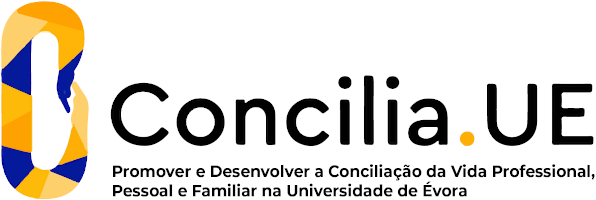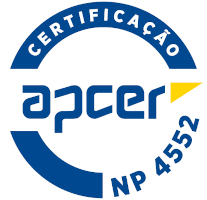2025
Numerical Analysis II
Name: Numerical Analysis II
Code: MAT14225L
6 ECTS
Duration: 15 weeks/156 hours
Scientific Area:
Mathematics
Teaching languages: Portuguese
Languages of tutoring support: Portuguese
Regime de Frequência: Presencial
Presentation
It is intended that the student performs a systematic study of numerical methods for solving ordinary differential equations (ODE) as well as an elementary study of numerical methods for problems with partial derivatives. Implementation of some methods using free software.
Sustainable Development Goals
Learning Goals
Systematic study of numerical methods for solving ordinary differential equations (ODE) and an elementary introduction to numerical methods for problems with partial derivatives. Implementation of some methods using free software (Python, Jupyter or SageMath).
In addition to the use of computational tools, it is intended to acquire theoretical mathematical results that allow the development of generalization and abstraction skills, which, in turn, will allow formulating and solving problems efficiently. With the preparation of a computational project throughout the semester, it is intended that students use mathematical models, acquire the ability to work / learn autonomously, with clear and rigorous writing and above all a critical spirit
In addition to the use of computational tools, it is intended to acquire theoretical mathematical results that allow the development of generalization and abstraction skills, which, in turn, will allow formulating and solving problems efficiently. With the preparation of a computational project throughout the semester, it is intended that students use mathematical models, acquire the ability to work / learn autonomously, with clear and rigorous writing and above all a critical spirit
Contents
1. Ordinary differential equations: initial value problems.
- Single step methods. Euler's methods. Truncation error and consistency. Taylor's methods. Runge-Kutta methods. Convergence, Stability.
- Multiple step methods. Adams, Nystrom and Milne methods. Multi-step linear methods. Consistency, convergence, stability. Predictor-corrector process.
- Systems of ordinary differential equations. Stiffness: a brief reference. Ordinary differential equations of higher order.
2. Ordinary differential equations: boundary-values problems.
- Collocation method. Least squares method.
- Finite difference method. Errors and convergence.
- Weak symmetrical formulation.
- Introduction to the finite element method. Basis functions.
- Single step methods. Euler's methods. Truncation error and consistency. Taylor's methods. Runge-Kutta methods. Convergence, Stability.
- Multiple step methods. Adams, Nystrom and Milne methods. Multi-step linear methods. Consistency, convergence, stability. Predictor-corrector process.
- Systems of ordinary differential equations. Stiffness: a brief reference. Ordinary differential equations of higher order.
2. Ordinary differential equations: boundary-values problems.
- Collocation method. Least squares method.
- Finite difference method. Errors and convergence.
- Weak symmetrical formulation.
- Introduction to the finite element method. Basis functions.
Teaching Methods
Theoretical lectures, examples with emphasis on applications, resolution of exercises, practical work in computational laboratory, one computational project. The computational project is mandatory, carried out individually or in small groups.
Assessment
Continuous Assessment (preferred)
2 Tests (1h30 each, minimum average grade 7, 5):
? 30 min written part (minimum grade 2.5)
? 1h lab-based part (minimum grade 5)
+ Weekly laboratory assignments (minimum average grade 7)
Requirements: ?7,5 in each test (?2.5 written + ?5 lab)
+ ?7 average in lab assignments
Final Grade = 0.7 × average of tests + 0.3 × average of lab assignments
Final Exam (2h30?, total minimum grade 7.5):
45 min written part (minimum grade 2.5) +
+ 1h45 lab-based part (minimum grade 5)
Weekly laboratory assignments (minimum average grade 7)
Requirements: ?7 total minimum in the exam (?2.5 written + ?5 lab)
+ ?7 average in lab assignments
Final Grade = 0.7 × exam + 0.3 × average of lab assignments
Resit / Special Exam Periods
Exam (total minimum grade 7.5):
? 45 min written part (minimum grade 2.5) + ? 1h45 lab-based part (minimum grade 5)
Laboratory mini-project (if the minimum grade 7,5 is achieved in first part)
Requirements: ?7,5 total minimum in the exam (?2.5 written + ?5 lab) +
?7 in the mini-project
Final Grade = 0.7 × exam + 0.3 × mini-project
To pass the course unit, the student must obtain a final grade ? 10.
Note
Whenever there is suspicion of the use of unauthorized resources, students may be required to take an oral exam before two members of the course jury.
2 Tests (1h30 each, minimum average grade 7, 5):
? 30 min written part (minimum grade 2.5)
? 1h lab-based part (minimum grade 5)
+ Weekly laboratory assignments (minimum average grade 7)
Requirements: ?7,5 in each test (?2.5 written + ?5 lab)
+ ?7 average in lab assignments
Final Grade = 0.7 × average of tests + 0.3 × average of lab assignments
Final Exam (2h30?, total minimum grade 7.5):
45 min written part (minimum grade 2.5) +
+ 1h45 lab-based part (minimum grade 5)
Weekly laboratory assignments (minimum average grade 7)
Requirements: ?7 total minimum in the exam (?2.5 written + ?5 lab)
+ ?7 average in lab assignments
Final Grade = 0.7 × exam + 0.3 × average of lab assignments
Resit / Special Exam Periods
Exam (total minimum grade 7.5):
? 45 min written part (minimum grade 2.5) + ? 1h45 lab-based part (minimum grade 5)
Laboratory mini-project (if the minimum grade 7,5 is achieved in first part)
Requirements: ?7,5 total minimum in the exam (?2.5 written + ?5 lab) +
?7 in the mini-project
Final Grade = 0.7 × exam + 0.3 × mini-project
To pass the course unit, the student must obtain a final grade ? 10.
Note
Whenever there is suspicion of the use of unauthorized resources, students may be required to take an oral exam before two members of the course jury.
Teaching Staff
- Marília da Conceição Valente Oliveira Pires [responsible]





















